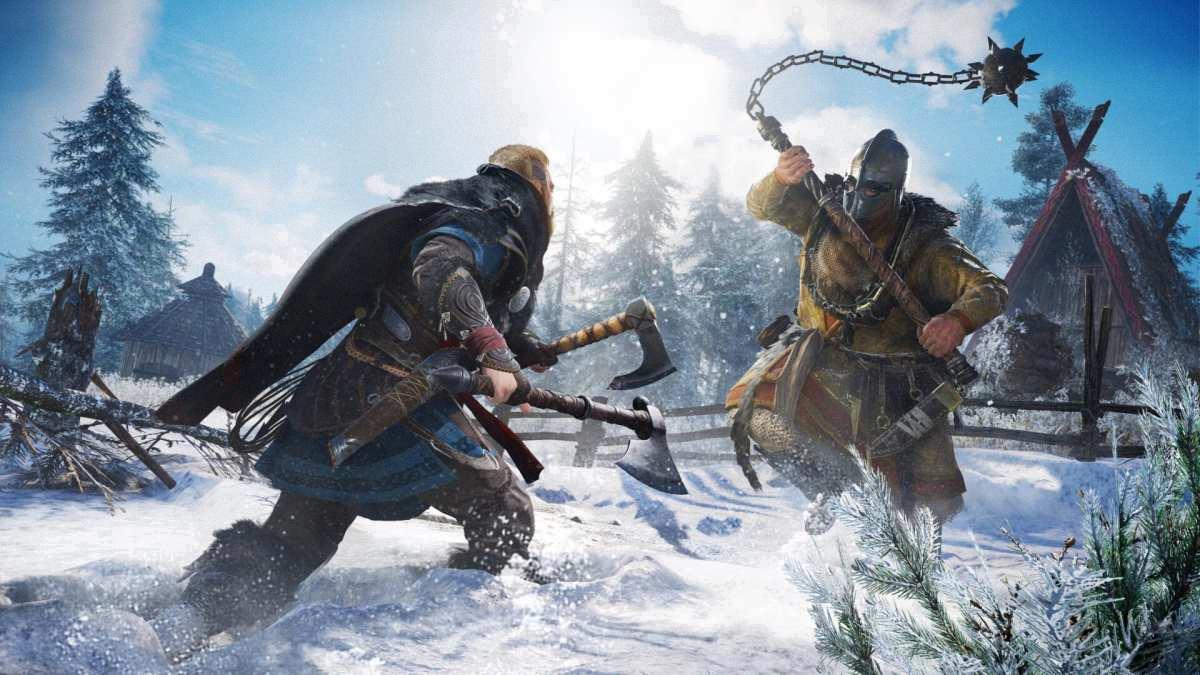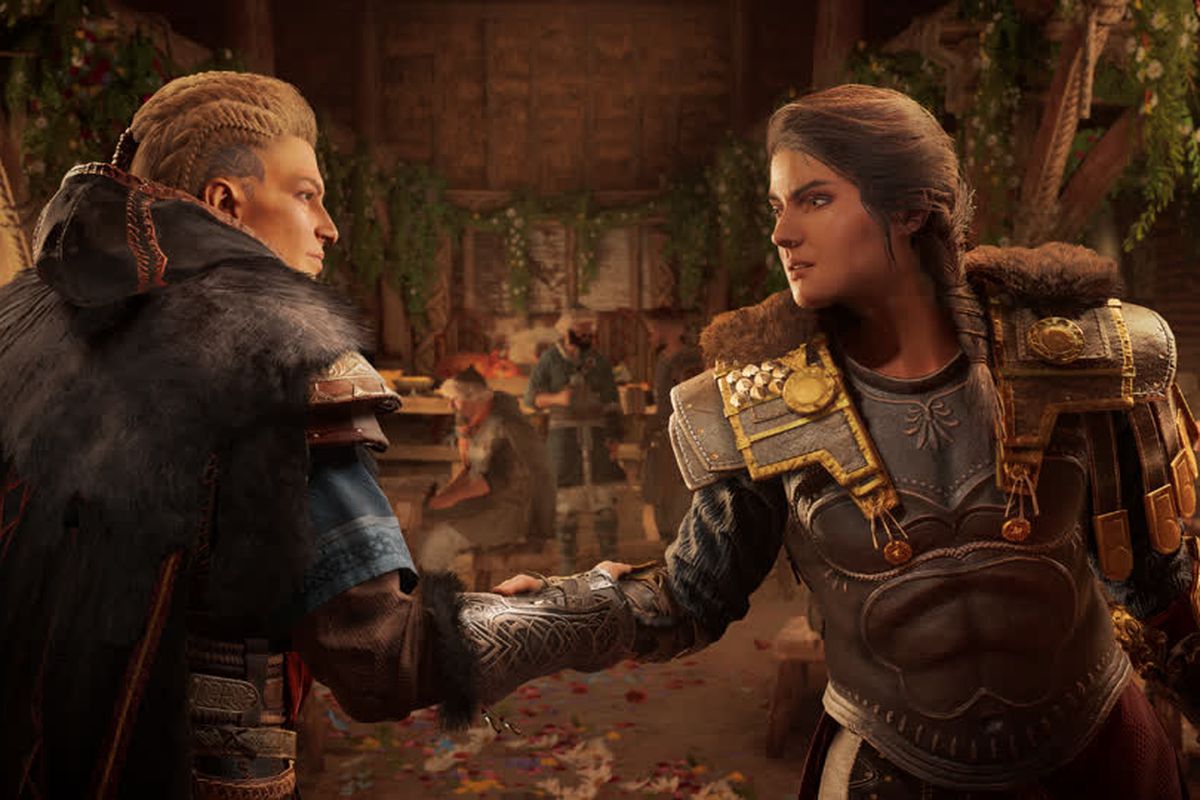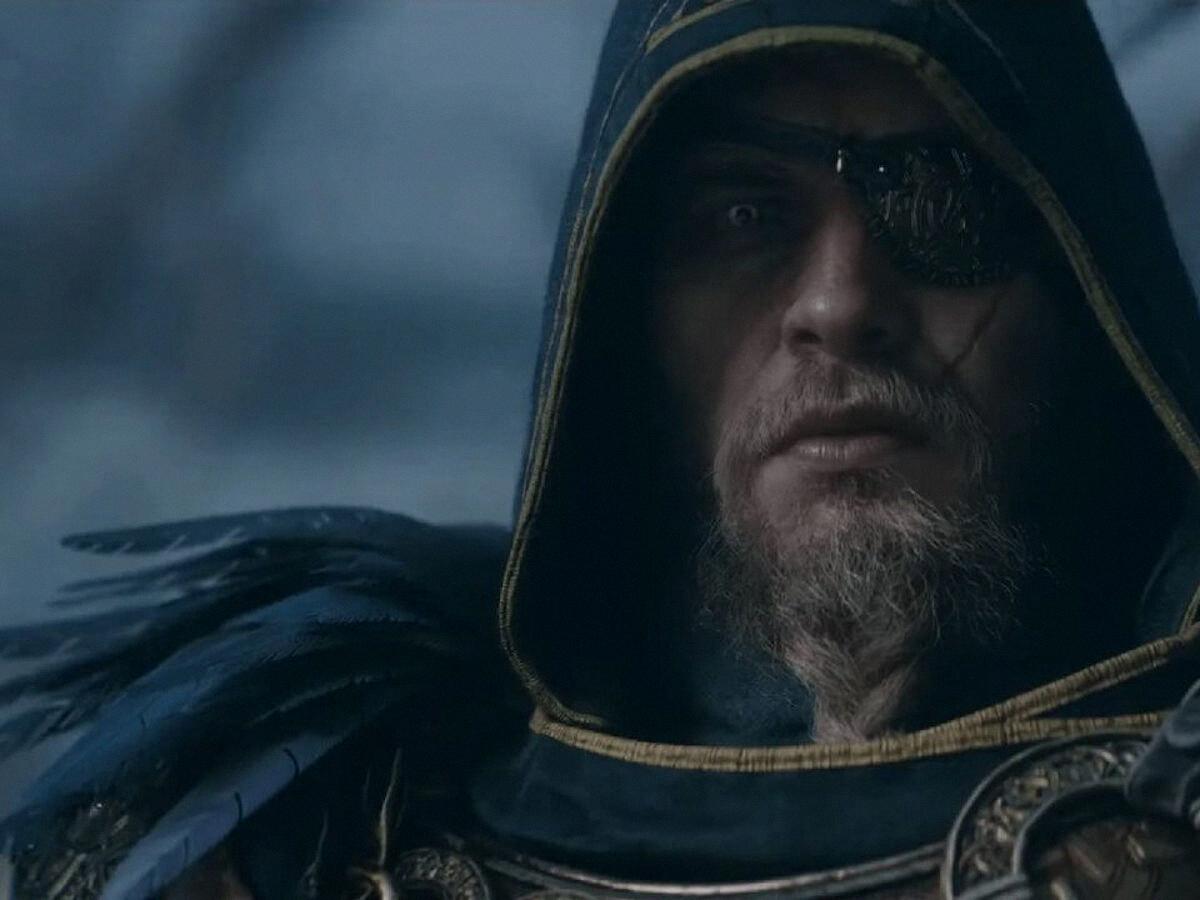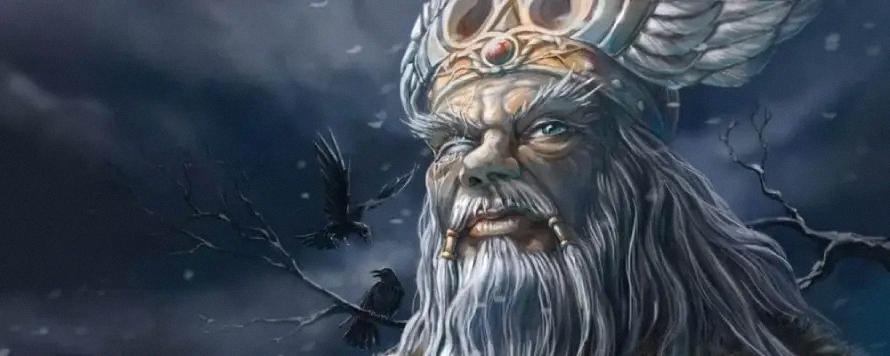Havi, also known as Hár, is one of the most significant figures in Norse mythology. He is the chief god of the Æsir, a group of gods worshiped by the ancient Norse people. Havi is also known as Odin, the All-Father, and is an Asgardian Isu who became a widely revered god in both Norse and Germanic mythology.
Havi is often portrayed as a one-eyed god, which is a reference to his sacrifice of an eye in exchange for wisdom. He is also associated with war, magic, and death, and is said to have two ravens, Huginn and Muninn, who fly around the world and bring him information.
It is believed that Havi/Odin played a crucial role in the creation of the world. According to Norse mythology, he and his brothers Vili and Ve created the world from the body of the giant Ymir. They also created the frst humans, Ask and Embla, from trees.
Havi/Odin is also associated with the concept of Valhalla, a hall in Asgard where warriors who died in battle were said to go after death. Havi/Odin was said to choose the bravest warriors to join him in Valhalla, where they would fight and feast until the end of the world.
In the Assassin’s Creed Valhalla game, the protagonist Eivor, along with Sigurd and Basim, are revealed to be reincarnations of the Isu named Havi/Odin, Tyr, and Loki respectively. This plot refers to an Isu plot to survive “Ragnarok,” referring to the Great Catastrophe which destroyed the First Civilization.
Havi/Odin is an important figure in Norse mythology and is widely revered as the chief god of the Æsir. He is associated with war, magic, and death, and is believed to have played a crucial role in the creation of the world. His portrayal in the Assassin’s Creed Valhalla game adds a new dimension to his character and highlights his significance in both Norse mythology and popular culture.
The Norse God Havi
In Norse mythology, Havi is a variant form of the name Hár, which is one of the many names attributed to Odin, the chief god in the Norse pantheon.
Odin is a complex and multi-faceted god, associated with a wide range of attributes and domains, including wisdom, war, death, poetry, magic, and more. He is often depicted as a one-eyed, bearded, and long-haired figure, wearing a cloak and wielding a spear named Gungnir.
As Havi or Hár, Odin is specifically associated with wisdom and knowledge, and is often depicted as a wise and learned figure, dispensing advice and insight to his followers. The name Hár, which means “high” or “tall,” is often interpreted as a reference to Odin’s status as a god of the highest order, wile the name Havi may be derived from a word meaning “high one” or “wise one.”
In addition to his associations with wisdom and knowledge, Odin is also known for his role as a leader of the gods, and as a god of war and death. He is often depicted as leading the charge in battle, and as presiding over the souls of fallen warriors in Valhalla, the hall of the slain.
The figure of Havi or Hár represents one of the many aspects of Odin’s complex and multifaceted nature, emphasizing his role as a wise and learned god, with a particular focus on his associations with knowledge, insight, and wisdom.

Source: twinfinite.net
The Significance of Eivor’s Name ‘Havi’ in Asgard
In the game Assassin’s Creed Valhalla, Eivor is referred to as “Havi” when he/she visits Asgard. This is because Eivor, along with Sigurd and Basim, are revealed to be reincarnations of the Isu, Havi/Odin, Tyr, and Loki respectively. The Isu were an ancient and highly advanced civilization that existed before humans and played a key role in the game’s lore.
According to the game’s story, the Isu created a device called the “Yggdrasil” which allowed them to transfer teir consciousness into new bodies, effectively achieving immortality. They did this in an attempt to survive the Great Catastrophe, an event that destroyed their civilization and almost wiped out all life on Earth.
In the game, Eivor and the other reincarnated Isu use the Yggdrasil to access Asgard and other mythical realms, where they interact with the gods of Norse mythology. Eivor is referred to as Havi in Asgard because that is the name of the Isu he/she is a reincarnation of.
It is worth noting that the use of Norse mythology in the game is primarily symbolic and not meant to be historically accurate. The game’s developers have stated that they took creative liberties with the source material in order to fit it into the Assassin’s Creed universe.
Eivor is called Havi in Asgard because he/she is a reincarnation of the Isu named Havi/Odin. This is part of the game’s larger story involving the Isu and their attempt to survive the Great Catastrophe.
The Origin of Odin’s Name: Havi
Odin, the god of wisdom, war, and death, was a central figure in Norse mythology. He was associated with many different names and epithets, one of which was Havi. The name Havi is derived from the Old Norse word Hár, which means ‘High One’. It is said that Odin was called Havi because he was considered to be the highest of all the gods.
The name Havi also has a deeper meaning. It comes from the Proto-Germanic word Har, which means ‘one-eyed’, and is a clear reference to Odin’s missing eye. According to Norse mythology, Odin sacrificed his eye to gain wisdom and knowledge. This self-inflicted wound was seen as a sign of his dedication to knowledge and his willingness to make personal sacrifices for the greater good.
Calling someone Hár was the equivalent of calling the Roman Emperor Caesar, after Julius Caesar, the firt Roman Emperor. It was a title of respect and admiration, reserved only for the most important and powerful figures in Norse society.
Odin was called Havi because he was considered to be the highest of all the gods and because of his one-eyed appearance, which was seen as a sign of his dedication to knowledge and his willingness to make personal sacrifices for the greater good.
Are Havi and Odin the Same?
Havi and Odin are considered to be the same entity in Norse mythology. Havi is an alternate name for Odin, which means “high one” or “the one who is aove all.” Odin is one of the most prominent gods in Norse mythology, known for his wisdom, magic, and war skills.
Odin is often depicted as a long-bearded man with one eye, wielding a spear and wearing a cloak and a wide-brimmed hat. He is also associated with ravens, wolves, and horses, which are considered sacred animals in Norse mythology.
In the Norse pantheon, Odin is the ruler of Asgard, the realm of the gods. He is also considered the god of war, magic, poetry, wisdom, and death. Odin is often depicted as a wise old man who travels the world in search of knowledge and wisdom. He is also known for his ability to transform himself into different forms, such as animals or other beings.
Havi and Odin are the same entity in Norse mythology. Havi is simply another name for Odin, the powerful and wise god of the Norse pantheon.
Is Eivor a Deity?
Eivor, the protagonist of Assassin’s Creed Valhalla, is not a god in the traditional sense. However, the game’s story reveals that Eivor is connected to the Norse gods and the Isu, an advanced ancient civilization that existed before humanity.
Throughout the game, Eivor has several visions and experiences that hint at her connection to the Norse gods. In one instance, she witnesses the god Odin’s memories and even takes on his appearance. This suggests that Eivor is a reincarnation of Odin or has some kind of spiritual connection to him.
Additionally, the Isu, who created humanity and are revered as gods in many ancient cultures, are a major part of the Assassin’s Creed lore. Eivor is revealed to be a direct descendant of one of the Isu, making her a part of ther lineage.
So while Eivor may not be a traditional god, her connection to the Norse gods and the Isu adds an intriguing layer to her character and the game’s overall story.

Does Eivor’s Journey Lead to Becoming Odin?
In Assassin’s Creed Valhalla, the main protagonist Eivor does indeed become Odin at certain points in the game. During these sections, Eivor enters a trance-like state and travels to the nine realms, taking on the persona of the Norse god Odin. This allows Eivor to gain a better understanding of the world and its inhabitants, as well as unlock new abilities and powers.
It is important to note that while Eivor is embodying Odin, they are not physically transforming into the god. Rather, it is a spiritual experience that allows Eivor to tap into the power and knowledge of Odin.
This aspect of the game has proven to be popular amng fans, as it offers a unique and immersive gameplay experience. It also ties in well with the game’s overall theme of Norse mythology and the Viking culture.
Eivor becoming Odin is a significant part of Assassin’s Creed Valhalla’s storyline and adds an exciting element to the game.
Exploring Odin’s Valhalla: An Overview
Valhalla is a majestic hall in Norse mythology were brave warriors who died in battle are taken by the god Odin. The name Valhalla comes from two Old Norse words: “valr” meaning “slain warriors” and “höll” meaning “hall” or “palace”. It is believed that Odin selects warriors who died bravely in battle and takes them to Valhalla, where they spend their afterlife feasting and fighting.
According to Norse mythology, Valhalla is a splendid palace, roofed with shields, where the warriors feast on the flesh of a boar that is slaughtered daily and made whole again each evening. The warriors in Valhalla are served by the Valkyries, who are maidens who choose who will live and who will die in battle.
It is also believed that in Valhalla, the warriors engage in eternal battles, preparing for the final battle between the gods and the giants known as Ragnarok. The warriors are said to be armed with weapons and armor, and they fight each other in a never-ending cycle of death and resurrection.
In addition, Valhalla is described as a place of honor and respect, where the warriors are revered for their bravery and courage. The warriors who are chosen to enter Valhalla are believed to have a special place in the afterlife and are honored by their families and communities.
Valhalla is a mythical hall in Norse mythology where brave warriors who died in battle are taken by Odin. It is a place of honor, respect, and eternal feasting and fighting, where the chosen warriors prepare for the final battle of Ragnarok.
Odin’s Hanging From Yggdrasil: Exploring the Mythology Behind the Ritual
Odin, the god of wisdom, poetry, and war in Norse mythology, is said to have hung himself from the branches of Yggdrasil, the world tree, for nine days and nine nights in a ritualistic act of self-sacrifice. This act was believed to have granted him immense knowledge of the nine realms of existence and the ability to understand the secrets of the runes.
According to the myth, Odin pierced himself with his own spear, Gungnir, and then hung himself from the branches of Yggdrasil, which is also known as the “tree of life”. This act was seen as symbolic of Odin’s willingness to sacrifice himself in order to gain enlightenment and knowledge of the mysteries of the universe.
During his time hanging from the tree, Odin experienced intense pain and suffering, but also underwent a transformative experience that allowed him to transcend his mortal limitations and gain access to knowledge and wisdom that was previously beyond his reach.
The act of hanging from Yggdrasil is often seen as a metaphor for the human quest for knowledge and enlightenment. It suggests that in order to gain true understanding of the world and our place in it, we must be willing to sacrifice ouselves and undergo a process of transformation and rebirth.
In Norse mythology, Odin’s sacrifice is also associated with the concept of “wyrd”, or fate. By sacrificing himself, Odin was able to gain insight into the workings of the universe and the forces that shape our lives, allowing him to better understand and navigate his own destiny.
Odin’s hanging from Yggdrasil is a powerful symbol of the human search for knowledge and enlightenment, and a reminder that true wisdom often requires us to undergo difficult and transformative experiences.
Is Loki the Father of Fenrir?
Fenrir is indeed Loki’s son. In Norse mythology, Fenrir is one of Loki’s three children with the giantess Angrboda. The other two children are Jormungandr, the World Serpent, and Hel, the goddess of death. Fenrir is often described as a monstrous wolf with immense strength and a fierce, unrelenting temperament.
According to myth, the gods became wary of Fenrir’s growing strength and feared that he would bring about their downfall. In an attempt to contin him, they attempted to bind him three times using magical chains, but Fenrir broke free each time. the god Tyr offered to put his hand in Fenrir’s mouth as a sign of good faith, knowing that he would lose his hand when Fenrir inevitably broke free. This allowed the gods to successfully bind Fenrir with a magical chain called Gleipnir, which was made from seemingly innocuous materials like the sound of a cat’s footfall and a woman’s beard.
While Fenrir is often seen as a symbol of chaos and destruction, he also plays an important role in Norse mythology as a harbinger of Ragnarok, the end of the world. According to legend, Fenrir will break free from his chains and join forces with the giants to wage war against the gods, ultimately leading to the destruction of the world as we know it.

Source: surflegacy.net
The German Name for Odin
In Germanic mythology and paganism, the deity known as Odin or Woden was referred to by various names in different Germanic languages. In Old English, he was called Wōden, wile in Old Saxon, his name was Uuôden. In Old Dutch, he was known as Wuodan, and in Old Frisian, he was referred to as Wêda. In Old High German, his name was Wuotan.
These various names all stem from the Proto-Germanic theonym *Wōðanaz, which translates to ‘lord of frenzy’ or ‘leader of the possessed’. This suggests that Odin was associated with ecstatic experiences and shamanic practices in Germanic cultures.
It is worth noting that the worship of Odin varied across different Germanic tribes and regions, and his name and attributes may have differed slightly depending on the specific cultural context. Nonetheless, the common thread among all these Germanic languages is the reverence and importance placed on this powerful and enigmatic god.
The Germans called Odin by various names such as Wōden, Uuôden, Wuodan, Wêda, and Wuotan, all of which are derived from the Proto-Germanic theonym *Wōðanaz, meaning ‘lord of frenzy’ or ‘leader of the possessed’.
The Ultimate Power of Odin
Odin is a popular deity in Norse mythology and has been portrayed in various video games. But, wich version of Odin is considered the strongest? Let’s explore some of the strongest versions of Odin in video games and rank them accordingly.
Starting with number 8, Valheim is a popular survival game that features Odin as a boss. While he is powerful, he is not considered the strongest version of Odin in video games.
At number 7, Hellblade: Senua’s Sacrifice features a unique portrayal of Odin as a manipulative and cunning god. While he is a formidable opponent, he is not the strongest version of Odin.
Moving up the list, Too Human introduces Odin as a cybernetic entity, but while he is powerful, he is not the strongest version either.
At number 5, Assassin’s Creed Valhalla features a well-crafted representation of Odin as a god of war. He is depicted as a wise and powerful being, but still not the strongest version of Odin.
Odin Sphere Leifthrasir at number 4 portrays Odin as a wise and powerful ruler, but he is not the strongest version of the god.
At number 3, Jotun features Odin as a boss battle, and he is depicted as a powerful and intimidating figure. However, he is not the strongest Odin in video games.
At number 2, God of War portrays Odin as a cunning and manipulative god, who is willing to do anything to maintain his power. He is a formidable opponent, but not the strongest version of Odin.
At number 1, Age of Mythology features Odin as a powerful god, with abilities such as being able to summon mythical creatures, cast powerful spells, and even resurrect the dead. He is considered the strongest version of Odin in video games.
While Odin has been portrayed in various forms in video games, the strongest version of him is considered to be the one depicted in Age of Mythology.
Does Odinism Still Exist?
The Odin religion or the old Nordic religion still exists today. It is also known as Asatru, which means “faith in the gods” in Old Norse. Asatru is a polytheistic religion that worships the ancient gods of the Nordic people, such as Odin, Thor, Freya, and Loki.
In Denmark, there are between 500 and 1000 people who practice Asatru, and it is estimated that there are thousands of Asatruar (followers of Asatru) worldwide. Asatruar meet in the open air, just as the Vikings did, for their blót ceremonies, which involve offerings and sacrifices to the gods.
Asatruar follow a moral code that emphasizes honor, courage, and loyalty, and they also value the importance of nature and the environment. Asatruar beleve that the gods and goddesses are not omnipotent or perfect, but are instead flawed and human-like, and they can be both helpful and harmful to humans.
Asatru has experienced a revival in recent years, as people seek to connect with their ancestral roots and find spiritual meaning outside of traditional religions. Asatruar also celebrate the traditional Nordic holidays, such as Yule, Midsummer, and Winter Nights, and they often incorporate traditional Nordic crafts and practices into their ceremonies.
The Odin religion, or Asatru, still exists today and continues to be practiced by a growing number of people who are drawn to its ancient gods and values.
The Slavic Equivalent of Odin
In Slavic mythology, the equivalent of Odin, the Norse god of wisdom, magic, and war, is considered to be Perun. Perun is the highest deity in the Slavic pantheon and is primarily assciated with the sky, thunder, lightning, storms, and rain. He is also known as the god of law, war, fertility, and oak trees.
Perun is often depicted as a muscular man with a long beard and fiery eyes, wielding a lightning bolt in one hand and an axe in the other. He is said to live in the heavens, where he watches over the world and protects it from evil forces.
Like Odin, Perun is a complex deity with many different aspects and roles. He is both a creator and a destroyer, a protector and a warrior, and a symbol of both order and chaos. He is revered by many Slavic peoples, who view him as a powerful and benevolent god who brings rain and fertility to the land, and who protects them from harm.
Perun is a central figure in Slavic mythology, and his importance in the pantheon is comparable to that of Odin in Norse mythology.

Source: blog.vkngjewelry.com
Conclusion
Havi Norse is a variant form of the name Hár, one of the many names of Odin, the chief god in Norse mythology. Havi is derived from the Old Norse word Hár, which means High One and refers to the one-eyed god Odin. Odin was an Asgardian Isu who became a widely revered god in both Norse and Germanic mythology.
It is interesting to note that in Assassin’s Creed Valhalla, the protagonist Eivor, alog with Sigurd and Basim, are revealed to be reincarnations of the Isu named Havi/Odin, Tyr, and Loki respectively. This is due to an Isu plot to survive “Ragnarok,” the Great Catastrophe which destroyed the First Civilization.
Havi Norse is a significant figure in Norse mythology and has continued to captivate the imagination of people through various mediums such as literature, movies, and video games.
